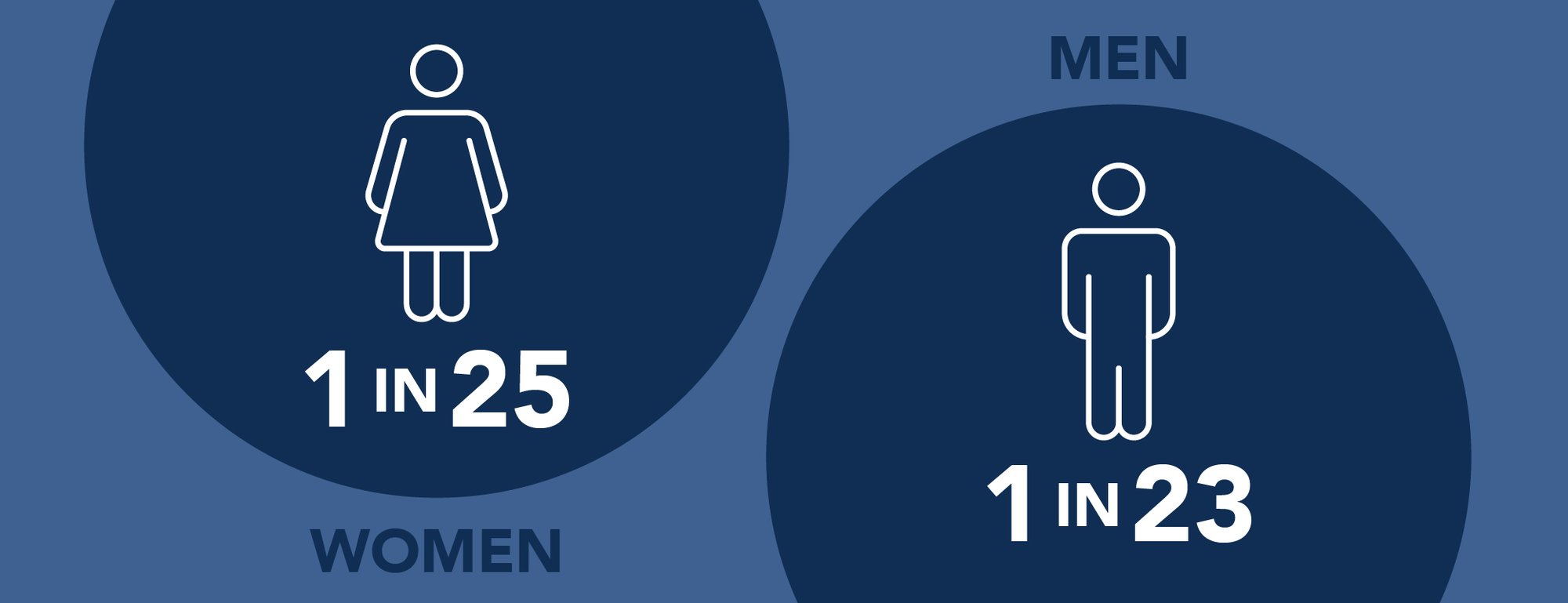Get Screened SD

Colorectal Cancer Control Program
Colorectal cancer screening can find precancerous polyps so they can be removed before they turn into cancer. In this way, colorectal cancer is prevented. Screening can also find colorectal cancer early, when there is a greater chance that treatment will be most effective and lead to a cure. Getting a lifesaving colorectal cancer screening is simple. The U.S. Preventive Services Task Force recommends colorectal cancer screening for men and women aged 45–75 using high-sensitivity fecal occult blood testing (FIT or iFOBT), FIT-DNA, flexible sigmoidoscopy, colonoscopy, or CT colonography.

Helpful Resources for Providers
Help promote early detection across South Dakota. Order educational materials free of charge.

Take-home stool test: every 1-3 years
These options are for average-risk patients who do not have personal or family risk factors for colorectal cancer. If any abnormalities are found, a standard colonoscopy may still be needed to remove polyps or take biopsies.
High-Sensitivity Guaiac-based Fecal Occult Blood Test (HSgFOBT)
The high-sensitivity guaiac-based fecal occult blood test (HSgFOBT) uses the chemical guaiac to detect blood in the stool. It is done once a year. For this test, you receive a test kit from your healthcare provider. At home, you use a stick or brush to obtain a small amount of stool. You return the test kit to the doctor or a lab, where the stool samples are checked for the presence of blood.
Fecal Immunochemical Test (FIT)
The fecal immunochemical test (FIT) uses antibodies to detect blood in the stool. It is also done once a year in the same way as an HSgFOBT.
FIT-DNA test
The FIT-DNA test (also referred to as the stool DNA test) combines the FIT with a test that detects altered DNA in the stool. Cologuard is one type of this test. For this test, you collect an entire bowel movement and send it to a lab, where it is checked for altered DNA and for the presence of blood. It is done once every three years.

Flexible Sigmoidoscopy: Every 5 years or every 10 years with a FIT every year.
During a flexible sigmoidoscopy, your doctor uses a short, thin, flexible, lighted tube to gently examine the inside of your rectum and the lower part of your colon (the lower third of your large intestine). This test allows the doctor to look for abnormal growths, polyps, or signs of cancer that could develop into something more serious if left untreated.
This is an option if you’re not at high risk for colorectal cancer and you have health factors that make a colonoscopy more difficult for you. It’s a quick, low-risk procedure that doesn’t usually require full sedation, and most people can return to their normal activities the same day.
By catching polyps early, this test can help prevent colorectal cancer before it starts. Pairing it with a yearly FIT test helps increase the chances of detecting problems early.
If any abnormalities are found, a standard colonoscopy may still be needed to remove polyps or take biopsies.

CT Colonoscopy (Virtual Colonoscopy): Every 5 years
A CT colonoscopy, also known as virtual colonoscopy or CT colonography, is a non-invasive imaging test that uses advanced X-ray technology and computer software to create detailed pictures of your entire colon and rectum. Instead of using a traditional scope, the doctor views the inside of your colon on a computer screen to look for polyps, growths, or signs of cancer.
The procedure is quick—usually taking only about 10 to 15 minutes—and does not require sedation, meaning you can return to normal activities almost immediately. While a bowel prep is still needed before the exam, many people find this option more comfortable than traditional colonoscopy.
If any abnormalities are found, a standard colonoscopy may still be needed to remove polyps or take biopsies. CT colonoscopy is a great option for people who prefer a less invasive screening method or who cannot undergo traditional colonoscopy for medical reasons. Ask your doctor if this screening option is right for you based on your personal health and family history.

Colonoscopy: Every 10 years
This is like flexible sigmoidoscopy, except the doctor uses a longer, thin, flexible, lighted tube to check for polyps or cancer inside the rectum and the entire colon. The doctor can find and remove most polyps and some cancers during the test. A colonoscopy is also used as a follow-up test if anything unusual is found during one of the other screening tests. Some people may need to have a colonoscopy done more often, based on increased risk for colorectal cancer.
Preperation & Testing
Preparation and testing take just 24 hours. This is the typical prep, but your provider will give you instructions. They're easy and virtually painless, and they could save your life.- The day before your procedure, enjoy a normal breakfast, then switch to clear liquids for supper.
- Complete a bowel prep, usually with a laxative solution. Yes, nature will take its course, and you may lose some sleep.
- During your colonoscopy, an experienced physician will use a thin, long, lighted, flexible tube to view the lining of your colon. Abnormalities and polyps can be identified or removed. The procedure allows for accurate diagnosis and treatment of colorectal problems without the need for a major operation.
- The procedure lasts from 30 minutes to an hour. The test itself is easy and virtually painless.
- You will stay in a recovery room for observation until you are ready for discharge.
- A friend or family member must drive you home.
Symptoms
The risk of developing colorectal cancer increases with advancing age. More than 90% of cases occur in people aged 45 or older. Other risk factors include the following:
- Bowel diseases such as Crohn’s disease or ulcerative colitis.
- Genetic diseases such as familial adenomatous polyposis (FAP) or hereditary non-polyposis colorectal cancer (Lynch syndrome).
- Family history of colorectal cancer or colorectal polyps.
Lifestyle factors that may contribute to the risk of colorectal cancer:
- Lack of regular physical activity
- Low fruit and vegetable intake
- A low-fiber and high-fat diet or a diet high in processed meats.
- Being overweight or obese
- Alcohol consumption
- Tobacco use

Don't wait for symptoms to occur. Your doctor will tell you whether a simple at-home test or a colonoscopy is appropriate. Both are fully or partially covered by most medical insurance plans.
Statistics
The American Cancer Society tells us:

Colorectal cancer is the 3rd most common cancer - not counting skin cancers - found in men and women.

Colorectal cancer is the 2nd leading cause of death among cancers that affect U.S. adults of both sexes.

The lifetime risk of developing colorectal cancer is about 1 in 23 for men and 1 in 25 for women.
Estimates for 2025
450
new cases of colorectal cancer will be diagnosed in South Dakota.
154,270
new cases of colorectal cancer to be diagnosed in the United States.
160
deaths due to colorectal cancer to occur in South Dakota.
52,900
deaths due to colorectal cancer to occur in the United States.
Staff Contact
Sarah Quail, Cancer Programs Director
Email: Sarah.Quail@state.sd.us
Phone: 605-367-8375
Programs
-

All Women Count!
You may qualify for free breast
and cervical cancer screenings.
See if you're eligible through
South Dakota’s All Women
Count! Program.
-

GetScreenedSD
Colorectal cancer is nearly 100
percent curable when caught
early. Screening is simple, quick,
and could save your life.
Discover your screening options.
-

SD Cancer Registry
The SD Cancer Registry collects
vital data on cancer diagnoses
statewide to help improve
prevention, treatment, and
survival for all South Dakotans.
-

SD Cancer Coalition
The SD Cancer Coalition
brings together partners from
across the state to reduce the
impact of cancer through
prevention, early detection,
treatment, and support.
